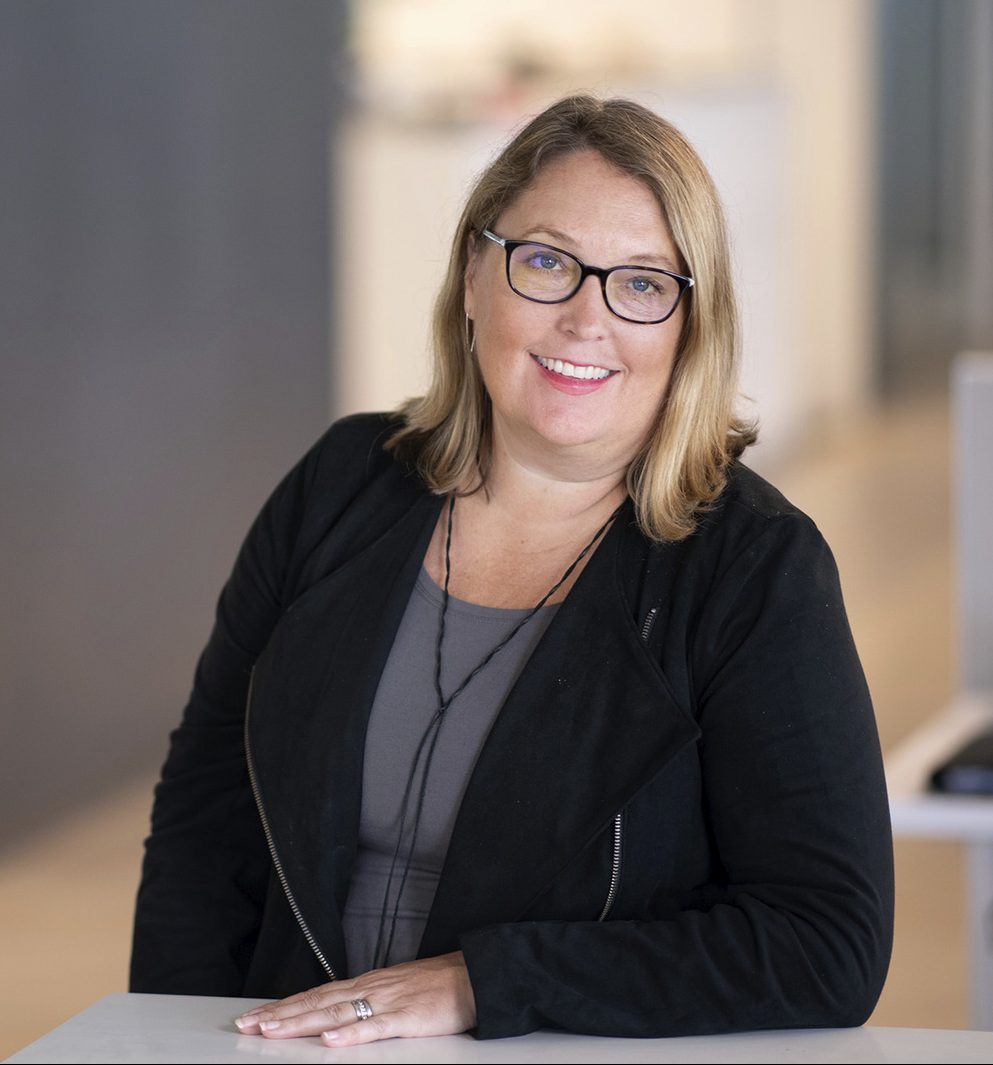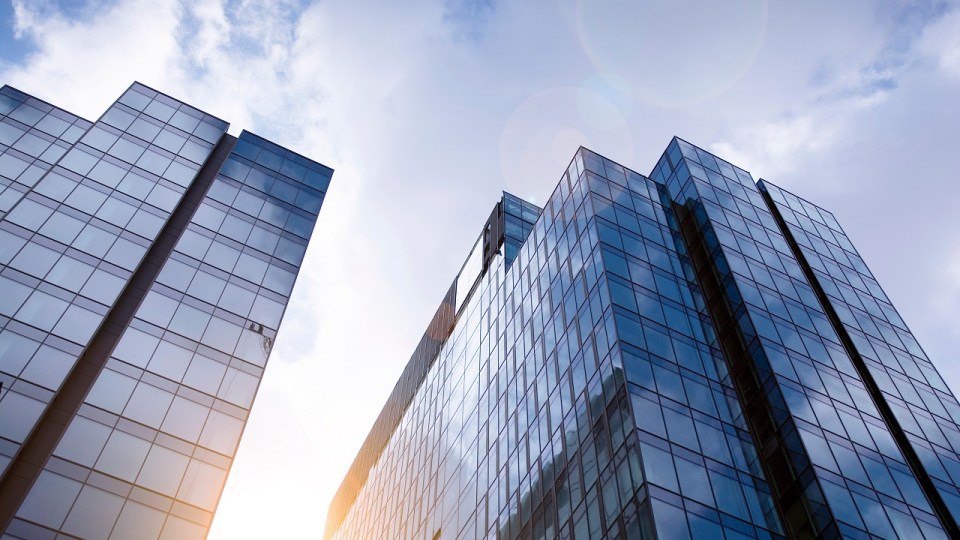Expert Insights: Marianne Weiss On Commercial Interior Design

For our latest expert insights interview, we had the pleasure of speaking with Marianne Weiss, IIDA, LEED AP, design principal at Unispace. Previously, she worked at Gensler, where her role as associate design director included directing projects in workplace design; health and wellness; and hospitality.
In addition to her expansive experience, Weiss is also an active member of the Boston design community, serving on the New England IIDA (IIDANE) chapter and on the WELL advisory board. Shealso believes in the importance of giving back to her trade, mentoring rising designers and freely sharing her expertise in design. Read on for her insights on commercial interior design.
Q: Tell us about your background and why you chose a career in interior design.
I actually have a background in psychology, and I spent eight years working in advertising before deciding to pursue a career in interior design. I returned to graduate school and earned a master’s degree in interior architecture from Rhode Island School of Design and, while in school, I realized that my skills in psychology are highly relevant to my work as a designer. Listening is one of the most important skills a designer can have, as we need to understand the needs of our clients and end-users in order to create the best possible outcome.
I have always been fascinated by architecture and interior design, and while I briefly considered becoming an architect, I realized that when I walked down the street, I didn’t look up at a building. I looked in. I was more interested in what was happening inside buildings than in the structures themselves. For me, a well-designed interior is about creating spaces [that] allow people to interact and have meaningful experiences.
As a designer, I see myself as setting the stage for users. It is important for my designs to remain flexible to ensure they can accommodate changes in the way people use space, especially in the wake of the pandemic. If we can help to bring together spaces that are adaptable and responsive to people’s needs, we can create environments that truly enhance and enrich people’s lives.
Q: What is your personal approach to commercial interior design?
When it comes to commercial interior design, my approach always begins with listening. I firmly believe there is no one-size-fits-all solution when it comes to designing for different clients. Each organization has its own unique culture, concerns, and perspectives that need to be considered to create an environment that addresses specific needs and preferences.
While I may use similar tools and techniques across all my projects, I am always open to adjusting my approach to fit the specific needs of each client. In today’s world, a lot of focus is being placed on environmental, social, and governance (ESG) issues, as well as diversity, equity, inclusion and belonging (DEIB). These are important conversations that can be reflected and supported through the design of physical spaces, and I am always looking for ways to incorporate these principles into my design work and to create spaces that allow for their manifestation. Ultimately, my goal is to create designs that not only meet the functional needs of the organization, but also reflect its unique identity and values.
Q: How can office interior design affect productivity?
As an interior designer who specializes in office spaces, I understand the critical role design can play in supporting workplace productivity. The key to successful office design is constructing an environment that supports the work being done within it by considering the needs and preferences of all the different people who will be using the space.
For example, at least 15% to 20% of the world’s population are neurodiverse and may respond differently to lighting, different colors, patterns and settings. Therefore, incorporating flexibility, diversity and choice into the design process can make a space more inclusive for a wider range of people. It is also important to consider physical challenges that some people may face and make sure the space is accessible to everyone.
If the design doesn’t support the work, it won’t perform — no matter how visually appealing it is. By prioritizing functionality, inclusivity, and accessibility, office design can have a positive impact on productivity and the well-being of the people who use the space.
Q: How did the COVID-19 pandemic change the office interior design sector?
The pandemic had [a] monumental impact on the office interior design sector, in both good and bad ways. In a positive sense, it shifted the focus away from real estate strategies that maximized square footage per person and toward creating smaller, more efficient spaces that support in-person and hybrid collaboration and learning that can’t be replicated via virtual means. Additionally, the pandemic forced most companies to invest in virtual collaboration software and provide increased workday flexibility for employees, allowing for better work/life integration.
I think the pandemic has also really highlighted the need for employers to start considering how to balance productivity and performance, as many people found they could be more productive at home. However, while teams have learned that digital collaboration can be done, there’s no real substitute for in-person collaboration, especially when it comes to big problem solving, creativity and innovation.
There are also concerns about the long-term effects of remote work, as humans were not meant to live and work in isolation. As designers, I feel this is an opportunity for us to create physical workspaces that can compete with the home office by offering similar comfort, flexibility, autonomy and convenience. Comfort doesn’t just refer to the physical comforts of home — like natural light, comfortable seating [and] nice furnishings — but [also] comfort in bringing your full, authentic self to the workplace. This is important for all employees, but especially traditionally marginalized communities.
As we look to the future, it is important to consider the potential impact of new technologies like the metaverse and collaborative gaming. While some clients may not be ready to embrace these technologies, they will undoubtedly shape the future of office design in new and exciting ways. Overall, the pandemic has shifted the conversation around office design, emphasizing the importance of flexibility, collaboration and creating a space that supports the needs of workers.
Q: What workplace design trends can we expect to see more of in 2023?
As we head into 2023, I expect to see workplace design trends focus on providing more choice and innovation in office spaces. Hybrid spaces are becoming increasingly common, integrating technology to facilitate collaboration and communication among remote and in-person workers. Huddle rooms, for example, feature digital whiteboards and large screens, allowing everyone in the room and on video calls to collaborate effectively.
The office is becoming the vessel to support work culture, so hospitality spaces that support the teams coming together will also be on the rise as companies recognize the importance of creating environments that promote interaction and connection among employees. Rather than just a workplace, the trend is shifting toward more innovation marketplaces, where individuals and teams can come together to share ideas and create solutions. With collaboration and innovation becoming increasingly important, workplaces will need to adapt accordingly to stay ahead in today’s rapidly evolving business landscape.
Q: Are there any trends that you expect to see declining in the next few years? Why?
I think there are several workplace design trends that we will see on the decline. One of the biggest changes we are likely to see is the elimination of the big sea of open office spaces with rows of desks and cubicles. The open concept isn’t necessarily going away, but it will look and feel a lot different for occupants. Instead, companies will be adopting more flexible and varied seating options — such as bar-height tables, couches and pod chairs — to create a more dynamic and comfortable workspace.
This shift away from traditional office layouts and toward more fluid and adaptable designs is reflective of the changing nature of work and the need for businesses to create spaces that support collaboration, creativity and innovation. Ultimately, as companies look to attract and retain top talent in an increasingly competitive job market, workplace design will play an ever more important role in driving productivity and employee satisfaction.
Q: What are some of the best home office decorating tips you can give us?
If you are setting up a home office, there are several things that can help you create a comfortable and productive workspace. One of the most important factors to consider is the lighting and background, which creates a professional virtual setting for video calls. It is also crucial to invest in ergonomic furniture, such as a supportive chair and a sit-to-stand desk, if possible, to minimize the risk of strain and discomfort.
Additionally, considering your peripherals, such as a keyboard and mouse, is important to ensure they are comfortable and will not lead to repetitive strain injuries, like carpal tunnel. You can also wear blue light glasses to reduce eye strain and help with headaches and insomnia. Additionally, it is equally important to establish boundaries and take breaks from work. Knowing when to walk away from your desk and close your workspace can help you maintain a healthy balance between work and home life, preventing work from taking over your personal space. By implementing these tips, you can create a comfortable and functional home office that supports your productivity and overall well-being.
Q: Are there any other insights you’d like to share?
When it comes to designing a workspace that truly reflects a company’s culture and values, there are several insights that should be considered. While it may be tempting to simply plaster the company logo and brand colors all over the office, this approach is overly simplistic and does not necessarily capture the essence of what makes an organization unique. Instead, it is important to take a deeper dive into the company’s identity and aspirations and find ways to express that through the design of the workspace. This involves understanding the people and communities where the organization operates and incorporating elements that reflect shared values and beliefs.
For example, we worked alongside the international law firm Orrick and their Racial, Social and Economic Justice Fellowship Program to workshop what diversity, equity, inclusion, and belonging meant to them and how it could manifest in the Orrick workspace. Their first ask was to be true to the urban culture of downtown LA. After many conversations with Orrick principals, staff and community members, we matched Orrick with iconic Los Angeles artist Robert Vargas, who created an original set of anchor murals in Orrick’s reception area that reflected Orrick’s deep partnership with the nonprofit A New Way of Life (ANWOL), which helps formerly incarcerated women reincorporate back into society. The gritty, urban character of the interiors around these murals was an ideal backdrop for their authentic and powerful message.
Additionally, we also helped to curate artwork from other artists throughout the rest of the office, and these pieces represent a range of different ethnicities, orientations, socioeconomic backgrounds and cultures. Now, when team members and clients walk into Orrick’s office, they are able to see themselves and other people in the art.
Of course, this level of customization may not be feasible for all organizations, particularly those with a global presence. In these cases, it is important to strike a balance between standardization and local customization, with an emphasis on functional considerations, such as seamless technology integration. Ultimately, the look and feel of a workspace should be a major topic for discussion, with a focus on creating an authentic and inspiring environment that fosters collaboration, creativity and productivity.
Interested in being interviewed for our Expert Insights series? Feel free to reach out to us at contributors@commercialcafe.com or check out other articles from our series here.

